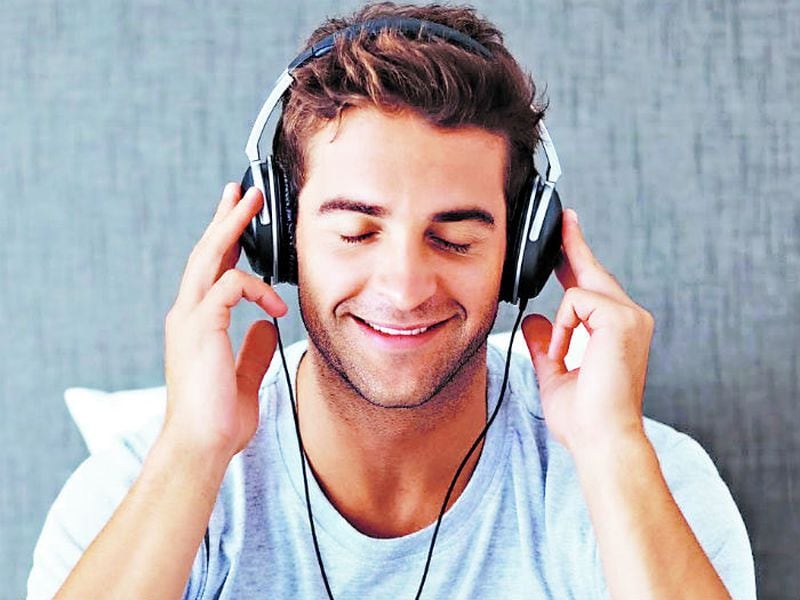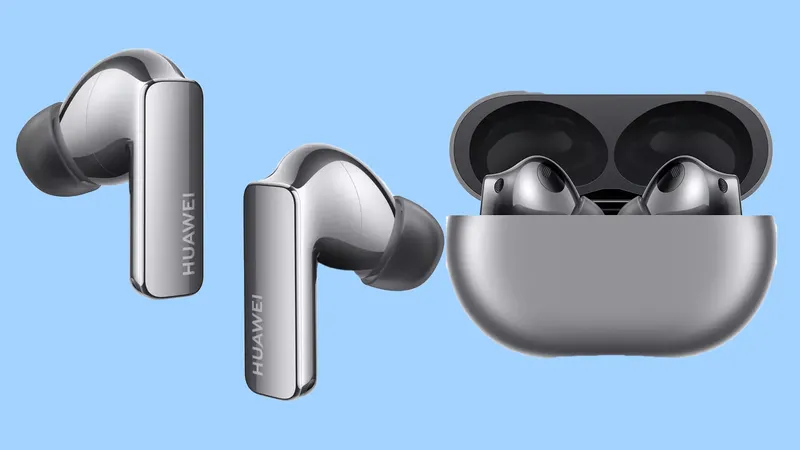These sounds, due to their frequencies, could promote relaxation, good sleep and other benefits. It is even suggested as a therapeutic support for patients suffering from insomnia or ADHD. Two specialists explain how they work.
Noise can help you sleep and concentrate. It sounds unusual, but it’s not. Some scientific research, as well as countless testimonials from people, suggest this. Of course, it’s not just any noise.
It happened to more than one of them in their childhood – and perhaps still – to fall asleep in the back seat of the family car. Anyone who has traveled by plane, especially over long distances, has probably fallen asleep despite the noise of the turbines. How come such a feat happens so naturally?
Although in these examples several factors exert their influence simultaneously, the one that will focus our attention in this pass is the background noise. Have you ever heard of white noise (or white noise, as the gringos say)? What about pink noise or brown noise (be careful, the translation here is not so simple)?
On TikTok, this last noise, the Brown, is trendy: videos tagged under the hashtag #brunnois they have over 87 million views. You can see the testimonials of various users, who claim to feel more relaxed when listening to this type of noise. Others, like British writer Zadie Smith, say it helps them concentrate, while some use it to fall asleep. Will it be possible?
What is white noise?
Simply put, sound is made up of frequencies, which is the number of waves per second. Frequencies can be high, mid or low. The former are what we consider to be high or high notes, while the latter are associated with low or low notes. This is all measured in hertz (Hz), but we’re not going to get into that.
The waves generated by the sound can have different amplitudes (imagine the drawing of an oscillating wave, like on a road full of hills: it goes up and it goes down, that’s the amplitude), what we call the intensity or , in common jargon, volume.
So-called white noise is sustained, uniform and continuous sound, which contains all frequencies (high, medium and low), with the same wave amplitude and, therefore, with the same intensity or power. If we think about the image of sound, white noise would look like a flat line.
And why is he called “white”? Basically because the definition used in the lighting is copied. While white light is one that contains a whole range of wavelengths, each corresponding to a color, white noise is one that has all frequencies.
Like all sounds, white noise can be found in nature. Have you ever heard a waterfall or a waterfall? The power of water, its fall into the void and the shock against the surface, in a constant. It’s white noise.
And Brownian noise or coffee?
You’ll wonder why the other noises have their color translation in Spanish but not brown, which translates to brownian and not brown. Well, because the adjective does not correspond to a chromatic trait but to the surname of Robert Brown, the discoverer of Brownian motion.
What is Brownian motion? It is the random movement of the particles which are in a fluid medium and which is produced by the collision of these with the molecules which make up the fluid. Have you ever stopped to stare at dust and lint floating in the middle of a beam of light streaming through the window? They seem to do it without any sense, it’s rather a chaos, however, they stay within the perimeter of the beam of light. These fluff are particles, and if they do not leave this zone, it is because they collide with the gas molecules which surround them. what gas? The next time you see a ray of light coming through your window, run your hand over the area where the dust and lint is moving. this gas. You can see the following video that demonstrates all of the above:
Robert Brown discovered this movement by observing the behavior of pollen as it floats on water. But what does this have to do with noise? Well, noise is sound, which in turn is made up of waves, or if you want to be imaginative, particles, while time is the fluid medium. And in this case, Brownian noise -also called “red”-, although it retains the characteristics of being sustained and continuous, differs from white noise because it is in an amplitude between 5 and 9 Hz, below the spectrum audible to the human ear, which is at 20 Hz. Therefore, only the lowest frequencies can be perceived.
Does the sound of turbines in the background relax you while you’re on a plane? You are therefore sensitive to Brownian noise.
pink noise
The sound of pink noise, on the other hand, is quite similar to what you usually hear when you are between two radio station frequencies. It’s a “flat” but clean sound—like when you’re silenced in a moment of silence: “shhh”—and for sound engineers it has a practical use: it allows them to analyze the behavior room acoustics, speakers or sound. equipment. If you’re monitoring the sound at a gig or a small gig, you’ll probably come across the sound engineer blasting pink noise from the speakers. But again: how could something like that relax someone?
From ear to brain
In 1913 the Italian painter and composer Luigi Russolo sought to expand “the limited variety of timbres” that a musical orchestra was dealing with at that time. Russolo was convinced that the human ear had become accustomed to the speed, energy and noise of the urban-industrial landscape that modernity offered. He thus created “The Art of Noises”, a futuristic manifesto in which he offers a vision of how electronics and technology could allow future musicians to process an “infinite variety of timbres found in noises, reproduced with appropriate mechanisms”.
A series of musicians and artists followed Russolo’s path, such as John Cage, who considered noises (noises) as a possibility to generate music without intellectual intervention, free from any subordination or position of superiority. Noise, he says, reaches the human ear directly, without preconceptions. This is how transgressive music can be made: with the sound of sheet metal, a pipe or the parts of a car. This same path was the one that led to the origins of electronic music.
Although Russolo’s and Cage’s positions have to do with artistic projection, as a goal in itself and not in search of therapy or other goals, it helps to get an idea of how it is that the noise can actually be reconsidered.
Álvaro Romero, neurologist at Clínica Indisa, explains that when sound is perceived by the human ear, the sound waves are translated into electrical waves. This information is immediately transmitted to the brain, more precisely to the area of the frontal lobes, where, among other things, the processes that allow you to concentrate, relax or fall asleep take place.
And for that, Romero says, the release of dopamine, a neurotransmitter known as the pleasure hormone, is essential, and white noise, pink noise, and Brownian noise can generate greater secretion in some people. Thus, they manage to feel more relaxed, with a better ability to concentrate or it is easier for them to enter a sleep phase.

Why only some and not all?
Among the thousands of TikTok users who have reported the benefits of using Brownian noise, there is a high number of people with Attention Deficit Hyperactivity Disorder (ADHD). According to them, by accompanying their activities with this particular sound, their level of concentration increases remarkably.
As far as Álvaro Romero knows, “brown noise helps maintain concentration for 30 minutes, it’s limited”. However, he points out, there is no evidence to confirm or refute the “magical powers” of colored noises. “Much more has been observed in people with dopamine deficiency,” which results in stress, insomnia, lack of concentration and hyperactivity, among other symptoms.
Pablo Brockmann, a UC CHRISTUS Health Network Sleep Center expert, points out that white noise has been used “decades ago for insomnia,” with interesting results, “particularly in children and infants.” Apparently, he says, “it helps to fall asleep and stay asleep, which will have beneficial effects for both children and parents.” That is why it has been very well articulated as a psychological and behavioral support therapy in these cases”.
Some studies suggest that white noise may also help behavior and sleep of girls and boys with ADHD. Also in his cognitive functions like the consolidation of memories, a process that occurs during sleep.
But while some enjoy the benefits of these noises, others simply agree with the RAE’s definitions: they hate them and bother them. Brockman believes this is influenced by genetic factors and “likely the noises they were exposed to early in life, both in the intrauterine phase and in the first few months of life”.
How much placebo is hiding behind all this? Difficult to know, but specialists consider that there are no contraindications or risks associated with exposure to this type of noise. Ideally, says Brockman, “the patient is able to concentrate without using noise or anything. However, if they give you an advantage, I don’t think it’s a bad idea to try to see the associated evolution”. Álvaro Romero thinks the same.
The market is full of gadgets and machines that offer to emit only white, brown or pink noise. “But with the applications of diffusion you can have them all on your cell phone,” says Romero, for whom it would be ideal “to listen with good noise-cancelling headphones, so outside sounds don’t sneak in.” That’s undesirable indeed.
A recommended hearing aid model? We tested several with noise cancellation, but some with very good value for money are the Huawei FreeBuds Pro 2: excellent sound, excellent battery and excellent external noise reduction system.
Huawei FreeBuds Pro 2 Noise Canceling Headphones

*Prices for products in this item are current as of November 1, 2022. Values and availability subject to change.
Source: Latercera
I’m Todderic Kirkman, a journalist and author for athletistic. I specialize in covering all news related to sports, ranging from basketball to football and everything in between. With over 10 years of experience in the industry, I have become an invaluable asset to my team. My ambition is to bring the most up-to-date information on sports topics around the world.


